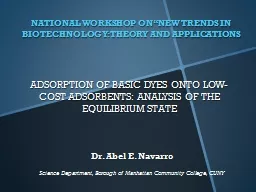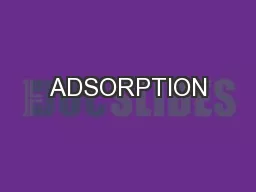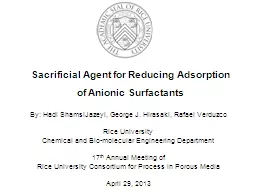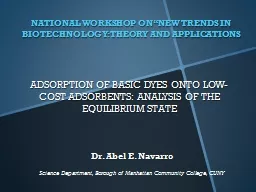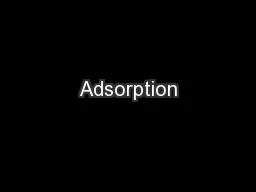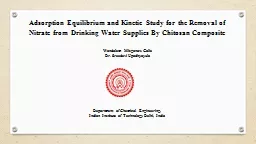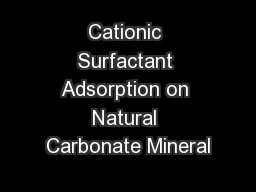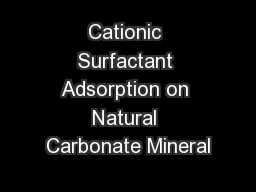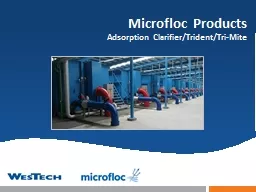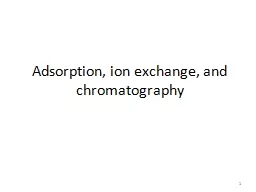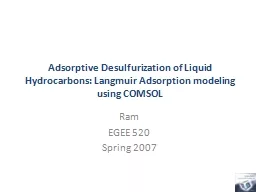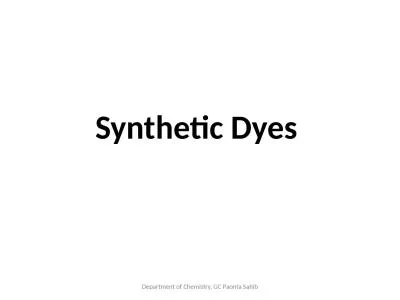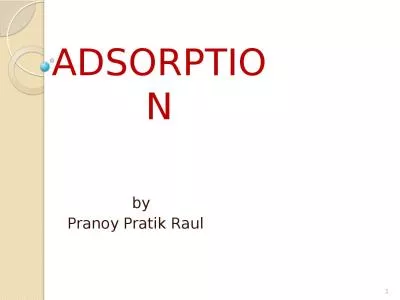PPT-ADSORPTION OF BASIC DYES ONTO LOW-COST ADSORBENTS: ANALYSIS OF THE EQUILIBRIUM STATE
Author : calandra-battersby | Published Date : 2019-12-07
ADSORPTION OF BASIC DYES ONTO LOWCOST ADSORBENTS ANALYSIS OF THE EQUILIBRIUM STATE NATIONAL WORKSHOP ON NEW TRENDS IN BIOTECHNOLOGY THEORY AND APPLICATIONS Dr Abel
Presentation Embed Code
Download Presentation
Download Presentation The PPT/PDF document "ADSORPTION OF BASIC DYES ONTO LOW-COST A..." is the property of its rightful owner. Permission is granted to download and print the materials on this website for personal, non-commercial use only, and to display it on your personal computer provided you do not modify the materials and that you retain all copyright notices contained in the materials. By downloading content from our website, you accept the terms of this agreement.
ADSORPTION OF BASIC DYES ONTO LOW-COST ADSORBENTS: ANALYSIS OF THE EQUILIBRIUM STATE: Transcript
Download Rules Of Document
"ADSORPTION OF BASIC DYES ONTO LOW-COST ADSORBENTS: ANALYSIS OF THE EQUILIBRIUM STATE"The content belongs to its owner. You may download and print it for personal use, without modification, and keep all copyright notices. By downloading, you agree to these terms.
Related Documents

